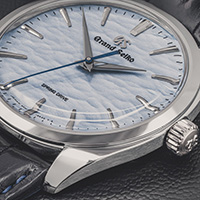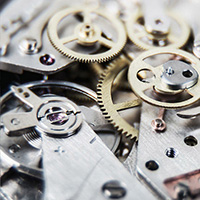Introducing | The Grand Seiko 'Tentagraph' Hi-Beat Automatic Chronograph SLGC001
TEN beats per second. Three days power reserve. Automatic chronoGRAPH.
Whimsically distinctive dials, a level of finishing to rival the cream of the crop from Europe, at price points that occupy the entry-level of luxury ownership, these brand tenets alone represent substantial pillars for Grand Seiko. Brands of a similar ilk would be happy to have these robustly established principles and would willingly deploy slightly modified ebauché movements. But Grand Seiko isn't like other brands.
For the Japanese artisans, conquering movement engineering is not only as crucial as ensuring the legibility of handsets, it's paramount to the brand's essence. And this has been the way since the beginning. Whether embarking on the quest for an 'everlasting watch' enduring 20 years and eventually debuting as Spring Drive, achieving high levels of accuracy with quartz movements, or even going above and beyond to hold themselves to account when creating the 9S mechanical movement, Grand Seiko has consistently displayed meticulous respect to their engines.
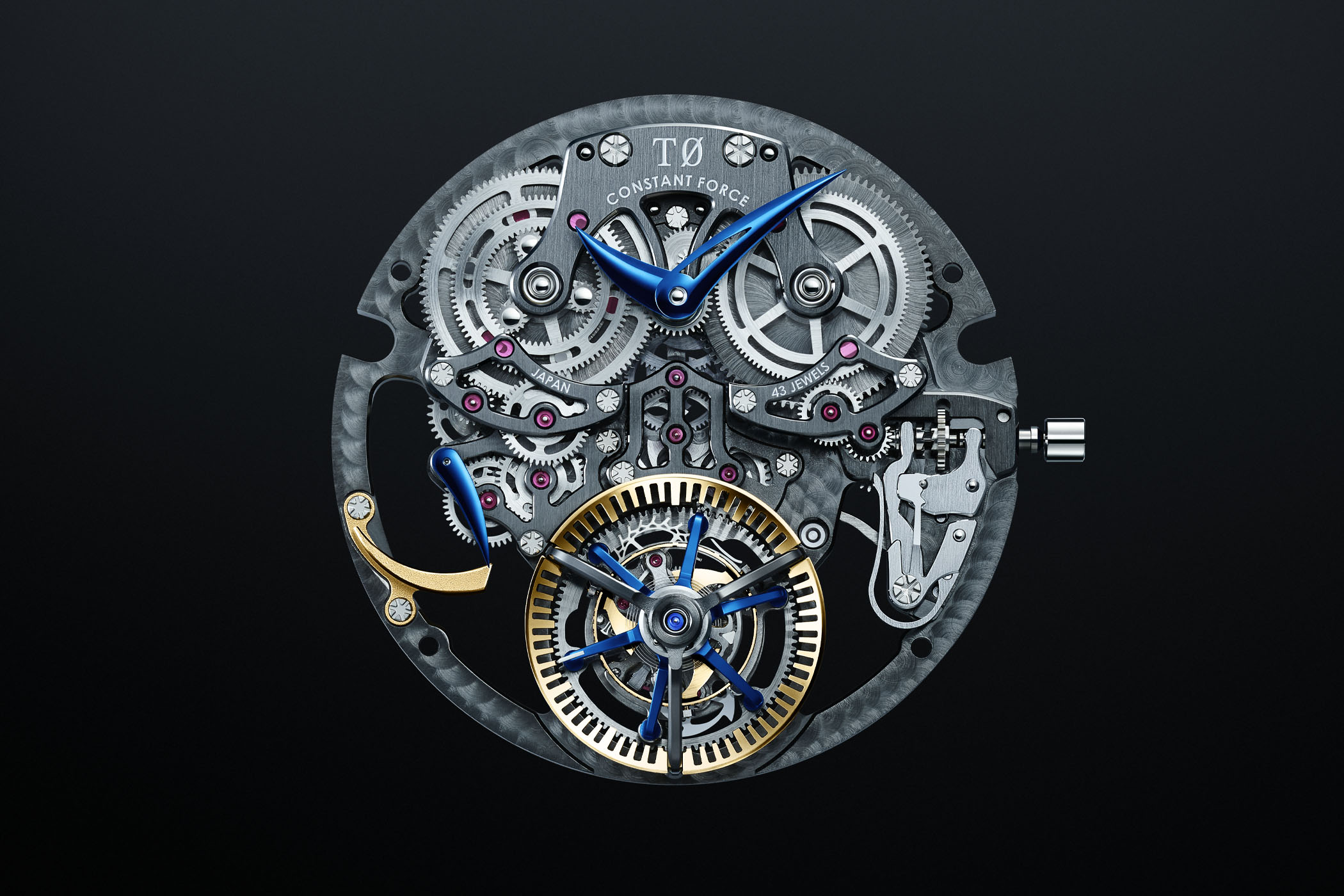
No better release celebrated this passionate commitment than the mindbending, Chronometry GPHG Prize winning creation of 2022, the Kodo Constant-Force Tourbillon. And in 2023, although admittedly not on the same level as the Kodo, Grand Seiko announced their first-ever mechanical chronograph coined the Tentagraph. With a 5Hz beat rate, and a running time of three days with the chronograph engaged, it stands as a landmark moment for the Japanese watchmaker.
Here's why.

The Grand Seiko Chronograph: The Story So Far
To truly appreciate the significance of the Tentagraph, we must first wrap our heads around what it means for Grand Seiko to produce a mechanical chronograph in the first place. As a manufacturer, Grand Seiko was admittedly late to the chronograph game, only making their first chronograph in 2007 via the Calibre 9R86 and the reference SBGC201. As a demanding complication often regarded as one of the most complex in watchmaking, it was a wise and wholly logical decision to develop their first chronograph on a Spring Drive base. Chronographs are particularly stressful on the escapement and balance wheel, as when they're engaged, the amplitude commonly drops, which can result in a fall in performance and, in turn, accuracy. With a Spring Drive, you don't have to worry about that as the technology essentially replaces the delicate escapement with a durable tri-synchro regulator (if you want to learn more about how Spring Drive actually works, click here for my breakdown).
So, result! Grand Seiko owned a chronograph movement and began to roll it out around the mid/late aughts. Nevertheless, they felt a mountain still had to be conquered in the form of the mechanical chronograph. And let's not forget, as a brand, they benefited from all of Seiko's know-how with chronographs. Seiko was right at the starting line of automatic chronograph movements, having produced one of the first in 1969 that featured a vertical clutch and column wheel. Even still, completing an automatic chronograph to Grand Seiko's standard would take time.
It's important to note that despite chronographs being incredibly widespread and one of the most commercially desirable complications available today, it's also one of the hardest and most technical to produce, especially if brands want to vertically integrate production. There's a reason why, albeit at a slightly different level to Grand Seiko, you had the likes of Patek Philippe, Audemars Piguet, Vacheron Constantin, Breguet, and Blancpain, all using ébauche movements for their chronographs well into the 1990s – one of many reasons why A.Lange & Söhne truly changed the game with its integrated Datograph in 1999; that's a different story for another day.
Back in Japan, a breakthrough development that opened the door for a mechanical chronograph for Grand Seiko was the company's proprietary dual-impulse escapement seen in the calibre 9SA5 Hi-Beat. This 9SA5 forms the base of their new modular chronograph movement, the 9SC5.
Why The Tentagraph Matters
So, why is the Tentagraph such a revelation for Grand Seiko? Well, firstly, let's address its modular design. This is where the chronograph functionality is added on top of an existing movement rather than being incorporated as a part of the overall development and manufacture; that would be an integrated chronograph. Typically this approach isn't favoured as there is a greater loss of amplitude and accuracy when the chronograph is engaged, with performance suffering when directly compared to integrated mechanisms. But Grand Seiko has that dual impulse escapement in its back pocket, which, thanks to a skeletonised starfish-shaped escapement wheel, can transfer power directly to the balance wheel and indirectly via the traditional approach of a pallet fork. MEMS (Micro Electro Mechanical System) technology is a method developed by Seiko to produce these parts, and they're cable of achieving a precision of one ten-thousandth of a millimetre. Without getting lost in specific movement parts, the outcome is that the new 9SC5 movement reduces the loss of performance typically experienced with modular movements to such a degree that it even improves upon integrated chronograph calibres.
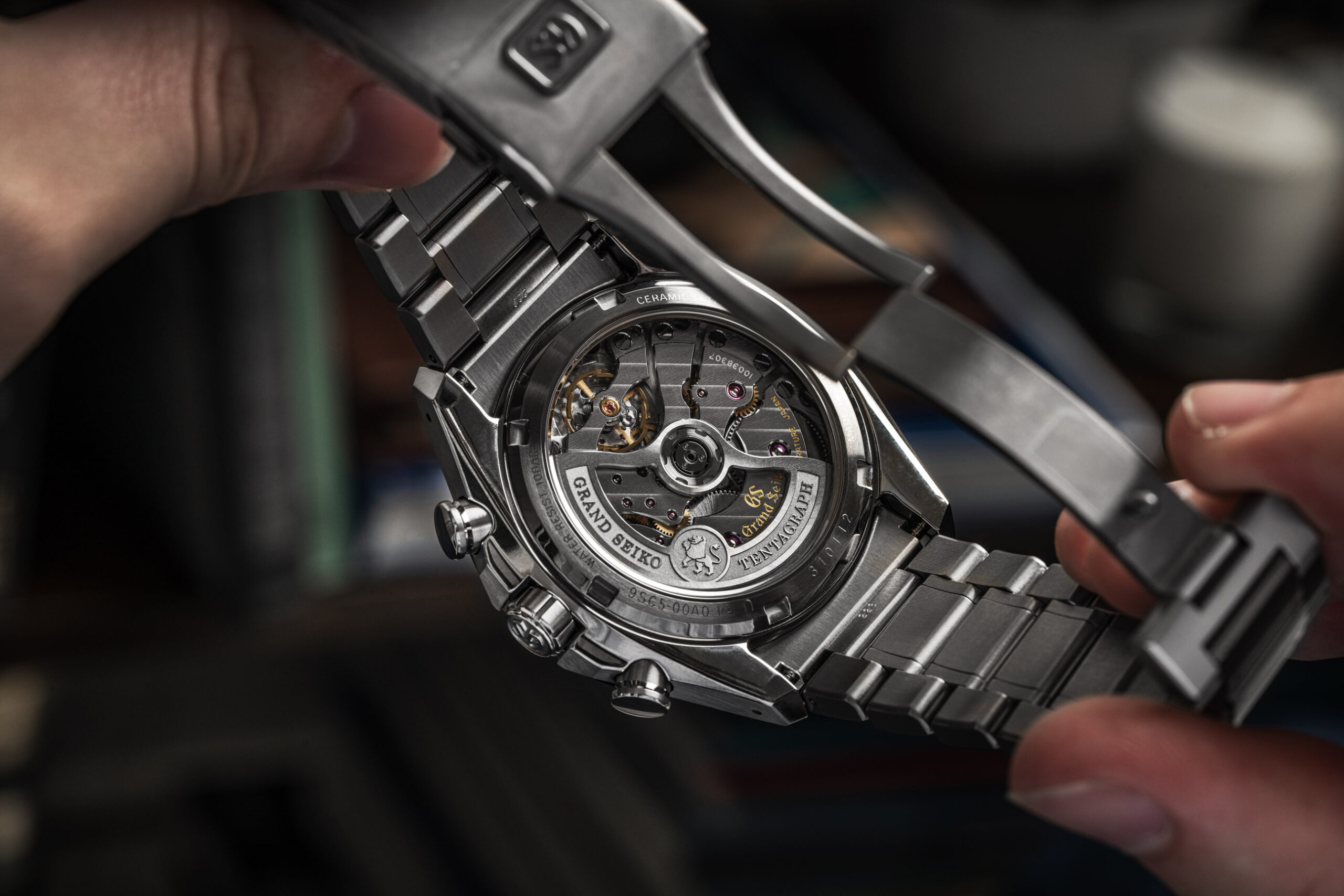
The escapement has always been the brain of any mechanical watch, but in Grand Seiko's world and its dual-impulse escapement, that brain just so happens to hold a master's degree from Oxford.
Next, we come to the Ten and t aspect of the model's name, as the Tentagraph has a power reserve of three days (thanks to its twin-barrel set-up) even with the chronograph running. That's already worthy of note in itself, yet when we consider that this movement has a frequency of ten beats per second, the fact that this seriously power-hungry movement can handle this seemingly with ease is remarkable. Based on Grand Seiko's research as of March 2023, this is 'the ten-beat chronograph with the longest power reserve in the industry today'.
Better still, the 9SA5 base is the thinnest Hi-Beat movement Grand Seiko have meaning the overall thickness of the new 9SC5 is actually less than the Spring Drive chronograph movements. This impact is felt externally, with the case width being 0.3mm less than the smallest Spring Drive powered chronograph (SBGC201) and the thickness being around 1mm more svelte. Furthermore, the 9SC5 also has ten more jewels than the Spring Drive chronographs, and it adheres to the Grand Seiko daily standard for mechanical movements of +5 to -3 seconds.
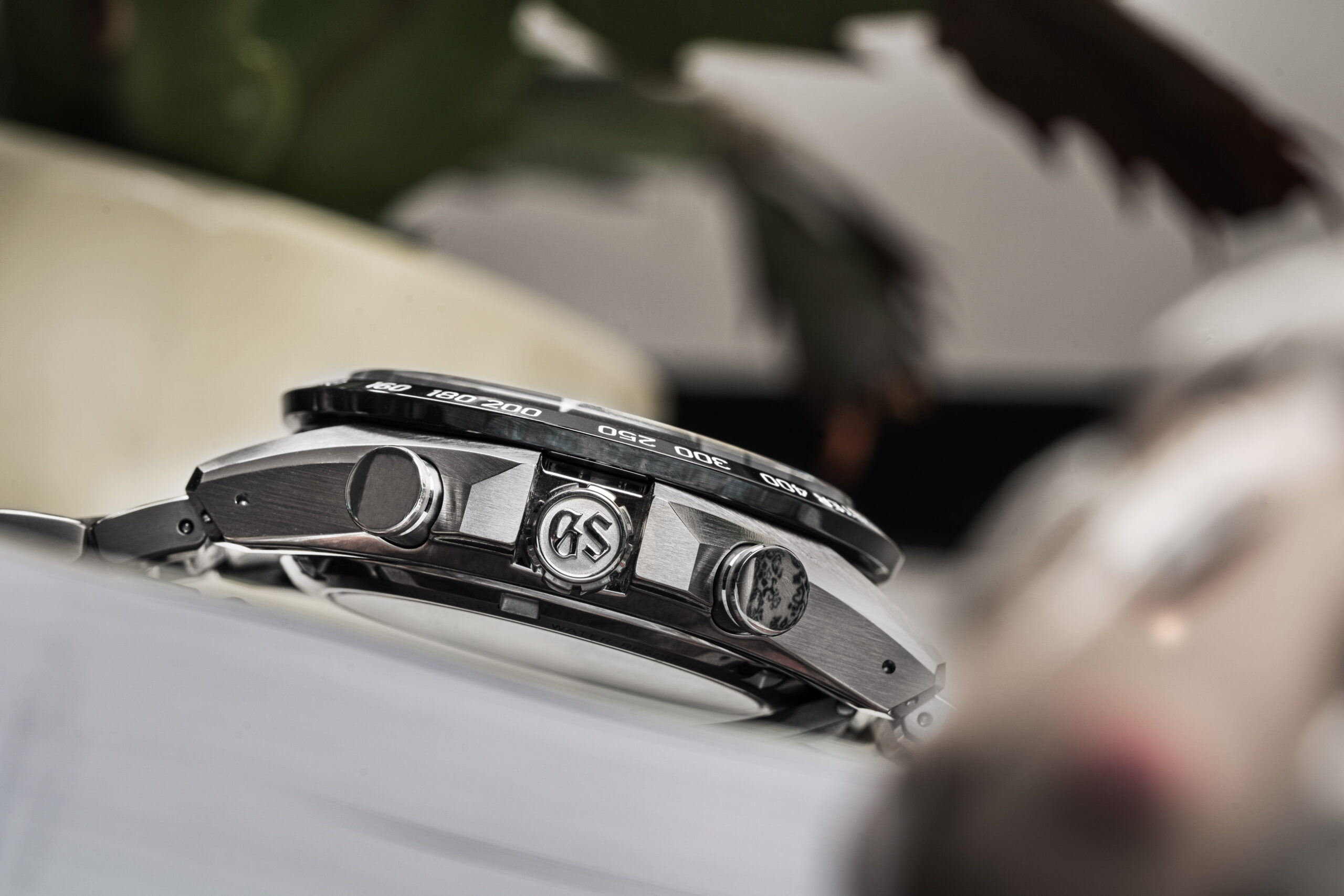
But, despite what this article suggests, the conversation surrounding the Tentagraph isn't exclusively focused on its movement, with a dynamic fit and finish to boot. Formed from high-intensity titanium, the piece is part of the Evolution 9 series, and, regardless of its titanium realisation, it bears Zaratsu mirror finishing for bevels and accents throughout its sporty case and bracelet. At first glance, its size is significant, but it's completely compelling on the wrist once considering what Grand Seiko has accomplished here. Irrespective of whether I would personally like it smaller, the relationship between each measurement is spot on, and that matters a ton.
As you might expect, Grand Seiko cut zero corners for the dial of the Tentagraph, harnessing their signature Mt. Iwate pattern, a design inspired by the contours of the Mount Iwate that's nearby to the Grand Seiko Studio Shizukuishi. In fact, even the midnight blue hue of the dial is conceived to mimic the Japanese night sky.

Complete with a black ceramic tachymeter bezel, and a lovely curved profile to the case, this 100m water resistance chronograph is hugely significant for the brand. It signifies the first few pages of a new chapter for Grand Seiko and its mechanical capabilities. For movement buffs and lovers of their masculine, bold, and assertively styled sports watches alike, the Tentagraph is a total feat of distinction.
The Specifications
Reference: SLGC001
Case: High intensity titanium.
Glass: Sapphire
Diameter: 43.2mm.
Thickness: 15.27mm.
Lug-to-lug: 51.5mm.
Water Resistance: 100 meters.
Dial: Blue.
Strap: Titanium
The Movement
Calibre: 9SC5
Power Reserve: 72 hours.
Pricing & Availability
Price: £12,500
Availability: Available now.
Learn more about Grand Seiko here
 Basket
Basket

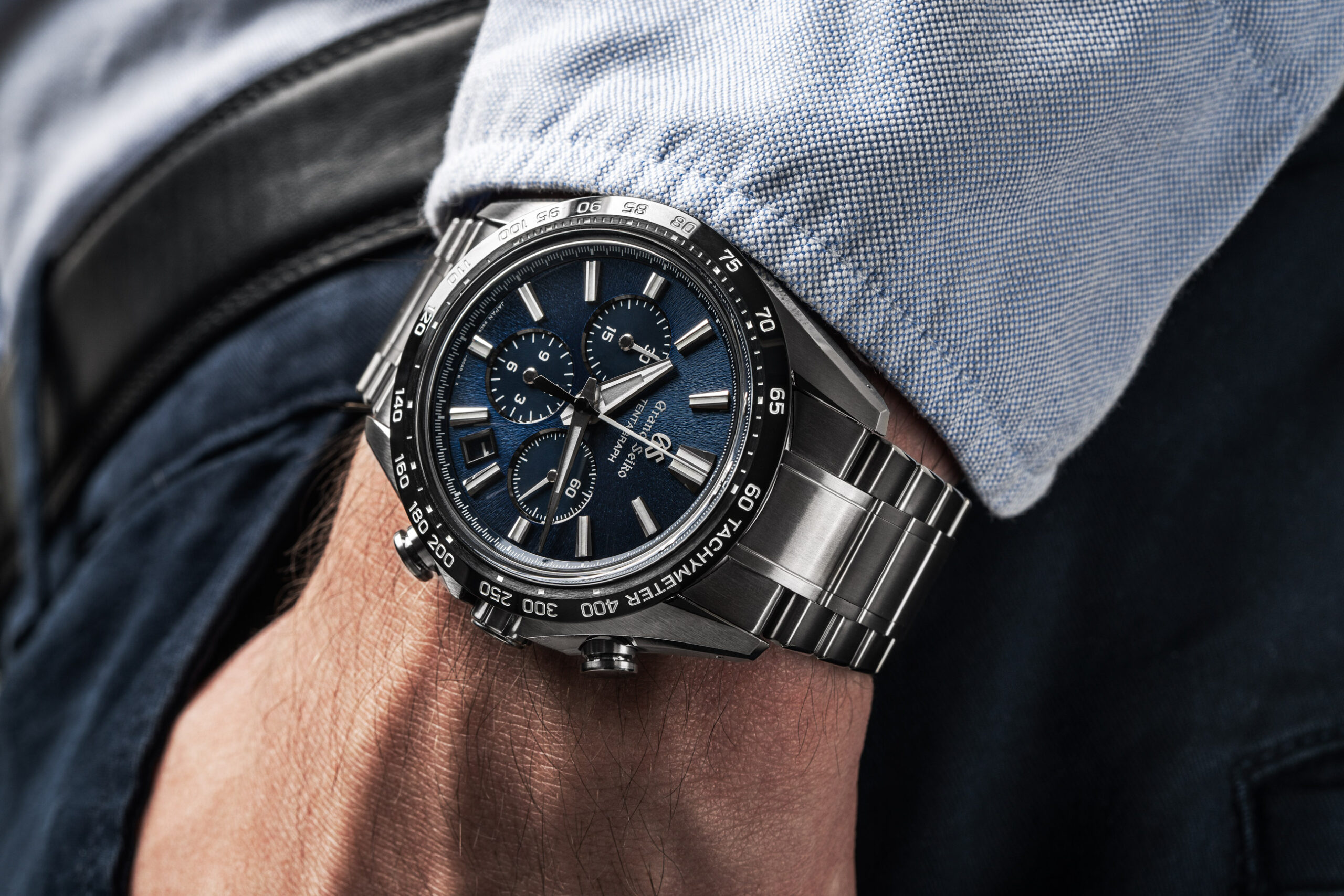


 Back to top
Back to top 0141 221 5855
0141 221 5855 Send us an email
Send us an email






 Secure payment methods
Secure payment methods






